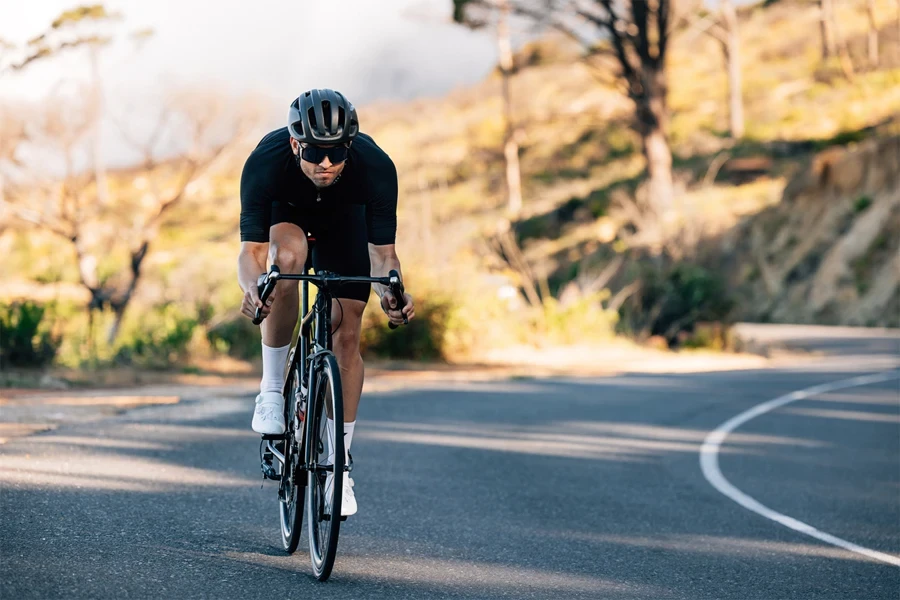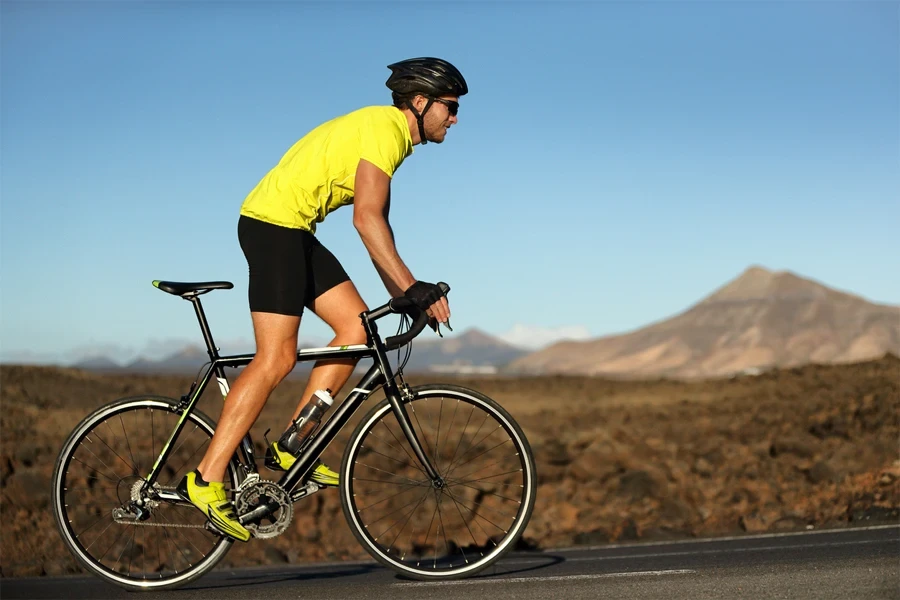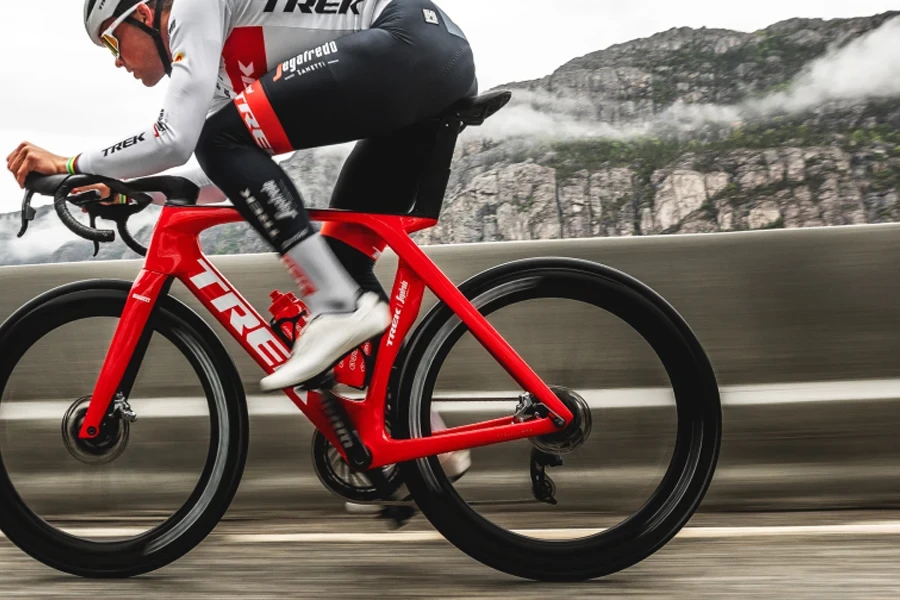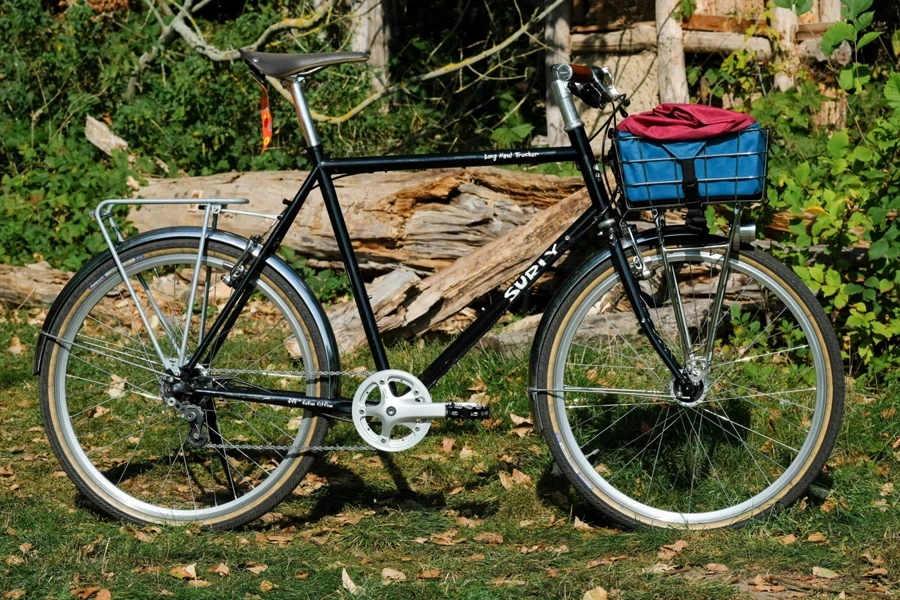In 2024, the road bike market rides into an era of unprecedented innovation and consumer-centric design. These bikes, far more than mere transportation tools, have evolved into sophisticated machines that cater to a diverse array of riders’ preferences and needs. From sleek, aerodynamically crafted racers to robust, all-terrain gravel bikes, each model offers unique features that enhance performance, comfort, and overall cycling experience. For online retailers, understanding these nuances is key to meeting the sophisticated demands of today’s market, ensuring that every product on the shelf is not just a bike, but a gateway to adventure and efficiency for the end user.
Table of Contents:
1. 2024 road bike market insights
2. Key considerations in product selection
3. Top road bike picks and their features
1. 2024 road bike market insights
In 2024, the road bike market is characterized by a blend of robust growth, technological advancements, and a shifting focus towards more diverse cycling needs.

Emerging trends in road biking
The road biking sector is witnessing significant technological innovation, with electronic shifting and integrated power meters becoming increasingly commonplace. These advancements offer riders smoother gear transitions and valuable feedback on their performance, enhancing both the utility and appeal of road bikes. Additionally, the sustainability movement within the industry is growing stronger. Manufacturers are increasingly utilizing eco-friendly materials and processes, not only benefiting the environment but also creating lighter and more robust bikes.
Furthermore, the emergence of new brands and the continual evolution of established models signal a dynamic market, ripe with opportunities for online retailers to diversify their product offerings. This diversity is not just in bike models but extends to accessories and gear, tailored to a broad spectrum of consumer preferences.
Market statistics and demand analysis
Globally, the cycling industry is experiencing substantial growth. In 2021, over 256 million bikes were sold worldwide, and by 2029, the global cycling industry is projected to reach a staggering $127 billion. This growth is driven by several factors, including an increased focus on health and fitness, environmental concerns, and the rising popularity of cycling as a leisure activity.
The road bike segment holds the largest market share among bike types, underscoring its popularity and the potential for sales in this category. In terms of regional sales, Asia-Pacific dominates the global bicycle market, accounting for over 34% of total sales in 2022. This is complemented by strong markets in Europe and the United States, where cycling contributes significantly to the economy.
For online retailers, understanding these trends and market dynamics is crucial for stocking products that meet the evolving needs of cyclists, from casual riders to dedicated enthusiasts. By offering a diverse range of bikes, including the increasingly popular electric models, and staying informed about the latest technological and sustainability trends, retailers can position themselves effectively in this dynamic market.

2. Key considerations in product selection
Selecting the right road bike for your inventory is a multifaceted decision, hinging not just on trends but also on understanding the diverse needs of consumers. Here are key considerations for product selection in 2024:
Determining the Right Type of Road Bike
Racing, endurance, touring, gravel, and cyclocross bikes
The road bike category is rich with variety, each type catering to a distinct rider profile. Racing bikes are the speedsters of the road, designed for competitive cyclists who prioritize velocity and aerodynamics. Endurance bikes, in contrast, are built for comfort over long distances, featuring a design that reduces fatigue. Touring bikes are sturdy workhorses, equipped for multi-day journeys with ample gear storage. Gravel bikes bring versatility, adept at handling both tarmac and off-road trails. Lastly, cyclocross bikes are robust and agile, ready for mixed-terrain racing. Retailers must consider the local consumer base and terrain when deciding which types to stock, ensuring a range that meets varied cycling pursuits.

Aligning bike features with consumer needs
Frame materials and build quality
The frame is the heart of any road bike, and its material significantly impacts performance and price. Carbon fiber offers a blend of lightness and strength but at a higher cost. Aluminum frames, on the other hand, provide a more budget-friendly option without compromising much on weight and durability. Retailers should consider a mix of materials to cater to different customer preferences and price points.
Technological innovations: Electronic shifting and power meters
Technological advancements are shaping the road bike market. Features like electronic shifting provide seamless gear changes, enhancing the riding experience. Power meters, now increasingly integrated into bikes, offer valuable performance data to enthusiasts. Stocking bikes with these modern features could attract a tech-savvy customer base looking for a cutting-edge cycling experience.
Importance of fit and comfort
A bike that fits well isn’t just comfortable; it’s also safer and more efficient. Retailers should emphasize bikes that offer a range of sizes and adjustable components, catering to a diverse customer base with varying body types. Providing options for customized fittings can be a significant value addition.
Budget considerations and price ranges
Budget is a decisive factor for most consumers. While premium bikes with advanced features command higher prices, there is also a significant market for mid-range and entry-level models. Offering a spectrum of prices, from the more affordable aluminum-frame bikes to the high-end carbon models, ensures that retailers can cater to both budget-conscious customers and those seeking top-tier performance bikes.

In summary, understanding the types of road bikes, aligning features with consumer needs, prioritizing fit and comfort, and considering budget constraints are crucial for online retailers. This approach not only meets the diverse needs of consumers but also positions retailers competitively in the dynamic road bike market of 2024.
3. Top road bike picks and their features
In the ever-evolving world of road biking, each bike model brings its unique set of technical details and advantages. Let’s delve deeper into the specificities of different road bike models, highlighting why they stand out in the market.
Highlighting leading models for 2024
For 2024, several models have taken center stage, each with distinctive features appealing to different segments of cyclists:
Racing bikes: Bikes like the Specialized Venge and Trek Madone epitomize the racing category. They are designed with aerodynamic frames, often using carbon fiber to reduce weight while maintaining strength. The advantage of these bikes lies in their ability to cut through the air with minimal resistance, offering maximum speed – an essential factor for competitive racing.

Endurance bikes: Models such as the Cannondale Synapse and Giant Defy exemplify endurance bikes. These bikes focus on rider comfort over long distances, featuring a more upright riding position, and often incorporate vibration-damping technologies. They are ideal for cyclists who undertake long rides or participate in gran fondos, where comfort is as crucial as performance.

Touring bikes: Touring bikes, like the Surly Long Haul Trucker, are built for durability and carrying capacity. They have robust frames, often made of steel for their repairability and comfort. These bikes are perfect for multi-day trips, equipped with mounts for racks and panniers, making them ideal for adventure cyclists and those on extended tours.

Gravel bikes: The likes of the Canyon Grail and Specialized Diverge are leading in the gravel category. These bikes blend the capabilities of road and off-road bikes, with features like wider tires for traction on varied surfaces and a robust frame to handle different terrains. They are suitable for riders who seek versatility and enjoy exploring off-the-beaten-path routes.
Cyclocross bikes: Cyclocross bikes, such as the Trek Boone or Giant TCX, are designed for cyclocross racing. They are lightweight yet durable, with clearance for wider tires and a geometry that allows for quick maneuverability. These bikes are ideal for riders participating in cyclocross races, requiring a bike that can handle a mix of terrains and conditions.
Comparative analysis of features and benefits
Innovations in frame and wheel design
The latest models have incorporated significant innovations in frame and wheel design. For example, aero bikes now feature integrated components and truncated airfoil shapes for frames, reducing drag. Wheelsets are also being designed with deeper rims for aerodynamics without compromising on stability, especially in crosswinds.
Advances in braking systems and gear mechanisms
Advances in braking systems, such as the shift to hydraulic disc brakes in many models, offer superior stopping power in various conditions, including wet weather. Gear mechanisms have seen a move towards electronic shifting systems, like Shimano’s Di2 or SRAM’s eTap, providing more precise and reliable gear changes.
Conclusion
Understanding the technical details and advantages of each road bike model is crucial for making an informed decision. Whether it’s the speed and aerodynamics of racing bikes, the comfort of endurance models, the robustness of touring bikes, the versatility of gravel bikes, or the agility of cyclocross bikes, each model serves a specific purpose. Online retailers equipped with this knowledge can guide their customers toward the bike that best fits their riding style and needs, ensuring satisfaction and fostering long-term customer relationships.




